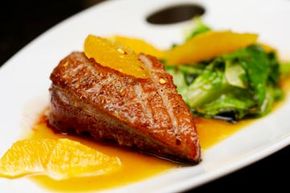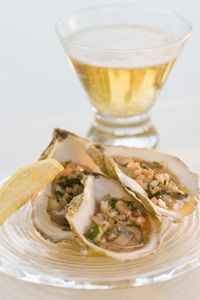Tasting menus are the hallmark of many upscale restaurants. After all, what patron wouldn't want to nibble her way through the entire menu when everything sounds so good?
Thankfully, there are multicourse tasting menus -- meals composed of several small servings that showcase a chef's culinary skills. The dishes may include luxurious components, such as caviar or truffles, and usually vary according to the availability of seasonal ingredients.
Advertisement
For those of us with knife and fork at the ready, a restaurant's tasting menu offers a delectable window into a chef's gastronomic philosophy. More to the point, we're able to sample four to 20 courses (or more!) that feature fantastic cuisine -- something just not possible when ordering regular servings a la carte. A half-dozen full-size courses would be cost prohibitive and more than most appetites could handle.
Spice up your next dinner party by creating your own tasting menu. (Wouldn't it be more exciting than the same old roast beast?) The fancy menu is sure to make your guests feel special. Plus, it won't be much more work than usual because you can choose recipes and plating styles to suit your strengths. Simply organize the tasting menu by region (Mediterranean), theme (Cajun) or ingredient (Kobe beef), and keep portions small so guests aren't satiated before the final course arrives.
You can ensure that the tasting menu stays manageable by limiting it to five or six courses. Save difficult recipes for just one or two main dishes, and stick with simple dishes that use only a few ingredients for the remaining courses. Prepare as much as possible ahead of time, leaving only the sauces and salads to the last minute.
If planning a multicourse menu seems overwhelming, remember: You don't need to cook solo. Recruit a sous chef in the form of a friend who loves to cook or even an off-duty expert who owes you a favor. Or, you could really take the pressure off by inviting guests to bring a sampling of foods that fit within your party parameters.
A tasting menu doesn't need to focus on food alone. Instead of putting all your energy into edible fare, pair carefully crafted flights of beer or wine with simple foodstuffs, such as artisan cheeses or fresh fruits.
We'll share more ideas for selecting libations on the next page.
Advertisement




